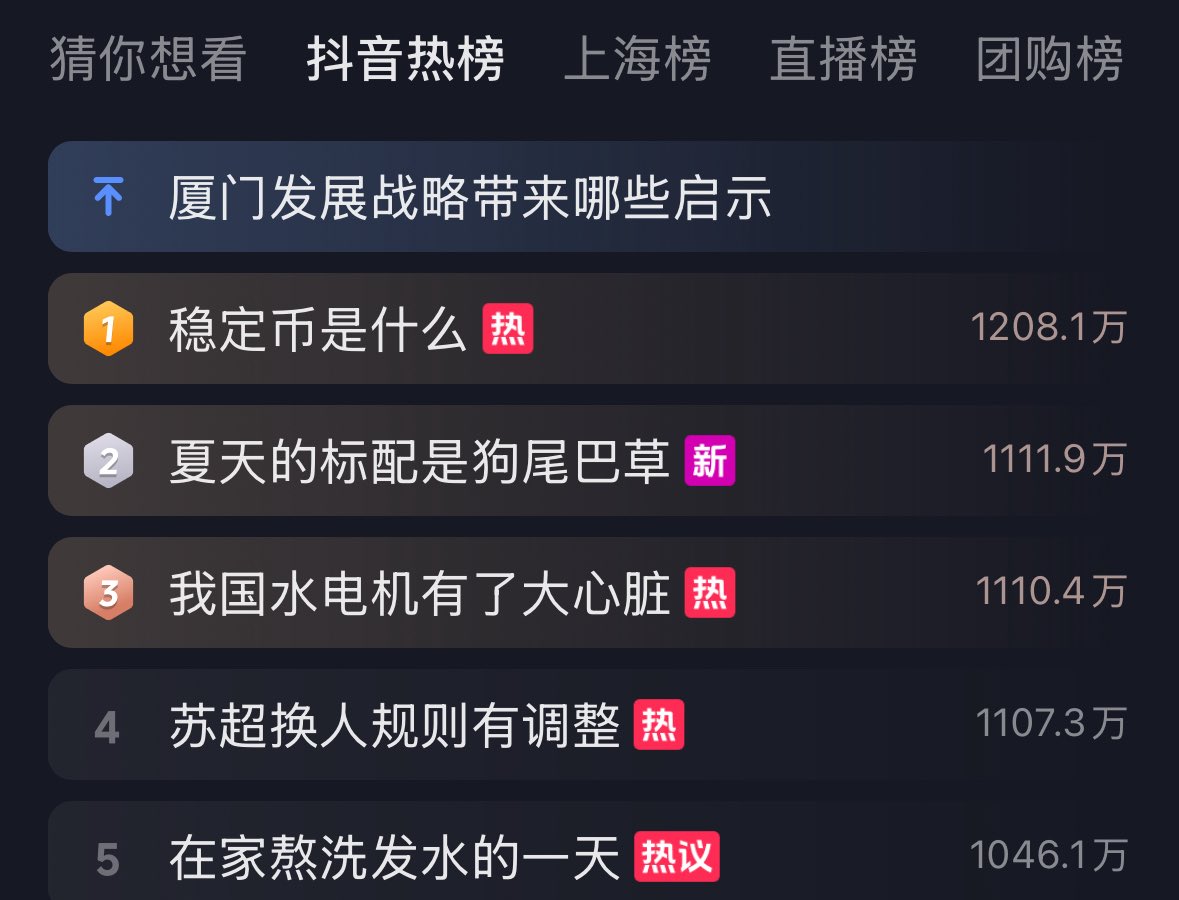Today (5th), the top trending topic on Chinese TikTok was the seemingly niche subject "What are Stablecoins". Against the backdrop of China's strict stance on crypto trading, this keyword suddenly becoming popular suggests that crypto topics can still generate significant public interest.

Too Hot! Behind the Market Signal?
TikTok's clicks and discussions reveal three signals. First, Chinese masses are starting to view stablecoins as the "dollar" of the blockchain world, no longer seeing crypto as just a high-risk asset, especially with discussions about issuing offshore RMB stablecoins within China.
Further Reading: JD.com and Ant Group Lobbying PBOC to Issue Offshore "RMB Stablecoin" in Hong Kong, Challenging US Dollar Hegemony
Next, Trump's emphasis on encouraging financial innovation after returning to the White House in 2025 is attracting more Wall Street institutions, and the market's demand for stablecoins has become increasingly apparent to Chinese citizens.
Lastly, global funds are seeking channels amid USD strength and hedging needs. Stablecoins, with their cross-border and low-volatility characteristics, have become the primary choice for institutions entering the crypto market, and such topics are beginning to dominate social platforms even in Asia.
Decoding Stablecoins: Types, Mechanisms, and Value
Stablecoins are pegged to assets like USD to minimize price volatility, providing a stable pricing unit for trading, settlement, and lending. They are divided into four categories based on collateral and design. Fiat-collateralized types like USDC and USDT are backed one-to-one by bank deposits and short-term government bonds, with regular audits forming the basis of trust. Crypto-collateralized types like Dai are maintained through over-collateralization and smart contracts. Commodity-collateralized types are based on physical assets like gold, suitable for specific scenarios. Algorithmic types exposed design weaknesses during the Terra UST collapse, sounding an alarm for the market. During circulation, arbitrageurs adjust supply through minting and burning mechanisms to keep prices close to the target.
China and US Perspectives on Stablecoins
The global race for regulatory leadership is ongoing. The US GENIUS Act is accelerating legislation to establish a federal-level reserve and audit framework, strengthening the pricing power of USD stablecoins. JP Morgan and Standard Chartered respectively estimate that stablecoins will reach hundreds of billions to trillions in the coming years.
European and Asian regulatory bodies often require consistent KYC/AML standards, indicating that cross-border stablecoin supervision is the most significant breakthrough.
While China continues to ban crypto trading and mining, the TikTok traffic peak inadvertently reveals that some decision-makers are considering financial issues. On one hand, stablecoins might compete or complement the central bank digital yuan; on the other hand, the risk of capital outflow from China could increase. Whether Chinese officials will reference overseas experiences to establish transparent stablecoin reserve regulations and allow pilot scenarios remains a key point of observation.








